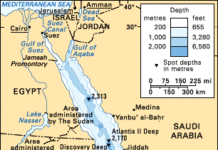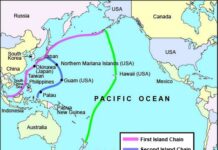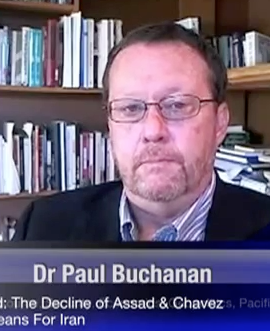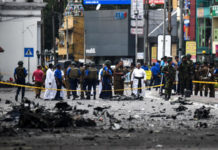Weekly Assessment: Intelligence Analytics
Assessment – By Dr. Paul G. Buchanan.
 From time to time 36th Parallel Assessments will offer intelligence analytic briefs. These are quick, short-hand tools that give a rapid grasp on a given subject. The analytic brief is not meant to be a substitute for a full intelligence assessment. Instead, it serves as a starting or entry point to a subject that saves time and research focus when addressing complex geopolitical or strategic issues.
From time to time 36th Parallel Assessments will offer intelligence analytic briefs. These are quick, short-hand tools that give a rapid grasp on a given subject. The analytic brief is not meant to be a substitute for a full intelligence assessment. Instead, it serves as a starting or entry point to a subject that saves time and research focus when addressing complex geopolitical or strategic issues.
This week we shall look at two such analytic briefs: capital flight and the triangulation of underdevelopment.
Capital flight serves as a good indicator of political risk. Capital leaves a country in the measure that it is at threat. The threat environment is a product of a negative business climate brought about in part by political instability. The latter can be measured in many ways – strikes, terrorism, parliamentary deadlock, coups, ethnic conflict etc. The point is that, for analytic purposes, a measure of the seriousness of political instability is not only the volume of capital flight but the type of capital that is fleeing.
Methodologically, capital flight is an outcome or product of the measure of risk extant in a country. Therefore it is the dependent variable that is influenced by intervening variables such as those that make up the political context and threat environment in which it occurs. The type of capital flight indicates the severity of the threat, and hence risk, that businesses are confronted with.
When confronted with political instability foreign capital is the first to pull up stakes. It has little nationalist attachment other than the nature of the investment, and it has the ability to defensively relocate assets, if even at a loss, to overseas alternatives. The quickest to relocate assets is finance capital, which has the liquidity and telecommunications capability to transfer large sums of money on short notice. It serves as an early warning indicator of political instability and risk. Foreign capital with fixed asset investments, such as in manufacturing, is slower to leave given the tangible nature of the investment and its insertion in domestic and global supply chains. Thus, although finance capital can be “spooked” by relatively minor political unrest, the latter has to be significant for fixed asset and value-added actors to decide to cut their losses and remove resources and personnel from a country. They serve as moderate to serious indicators of political instability and risk.
The real sign of serious political instability, to include the possibility of revolution, is when domestic capital begins to move overseas for defensive (non-expansionary or investment) purposes.
The exception to this general rule of capital flight is state enterprises, which as public entities cannot be liquidated and transferred abroad, at least in their totality. But even here there are signs that can be used to assess political instability: asset stripping and sell-offs by governments under political siege are often signs of managerial decisions to transfer capital abroad in the face of impending adverse political turn of events.
Monitoring capital flight flows as indicators of political risk is therefore a good analytic brief on the larger subject of political instability and change.
The Triangulation of Underdevelopment:
With regard to the triangulation of underdevelopment, the analytic brief involves triangulating three conceptual “vectors.” Although there are many indicators and measures that demonstrate a culture of dependence and the perpetuation of underdevelopment, and these all need to be factored in order for a comprehensive assessment of a national situation to be made, there are three macro-indicators that when taken into consideration together provide a snapshot that indicates a high possibility of intractable underdevelopment:
- the percentage of GDP that is derived from foreign aid,
- foreign remittances
- and foreign tourism.
In short, the more a country’s GDP is driven by these three factors, the more likely the country in question is chronically underdeveloped and likely to remain so. This framework is an adaptation of the so-called MIRAB model of political economy, whereby migration, remittances, aid and bureaucracy are seen as the dominant structural characteristics of small island states, to which attendant social and economic morphologies are attached.
The longer such aid is delivered without eliminating the problem to which it is directed, the more likely that it is not being delivered efficiently or being used for other purposes.
Foreign remittances are an indication that recipients are either unemployed, under-employed or living below basic material levels of existence. The more recipients there are the more it is likely that there are chronic problems with employment and other productive activity. In the main, remittances are not used for the enjoyment of luxury items and high standards of living but to supplement meagre family incomes and subsistence levels of existence. Hence the more a country is dependent on remittances as a percentage of GDP, the more likely that it is mored in a cycle of poverty and underdevelopment that foreign aid has not been able to overcome.
Foreign tourism, while certainly is a major income earner and source of hard currency, nevertheless is not a panacea for underdevelopment nor a substitute for a more diversified productive apparatus. Much foreign tourism involves foreign capital directed at niche markets in which the majority of revenue streams are directed overseas rather than back into local economies. Even when massive in scale, foreign tourism rarely involves the majority of a local population and is rarely distributed throughout the totality of national territory, even in the case of small island states. This leads to a “dual economy” syndrome where the tourist sector has the features of modernity and sophistication while the surrounding non-tourist economy manifests pre-modern or underdeveloped characteristics. Besides the social pathologies that this can give rise to, the main issue is that the gains from foreign tourism are narrowly distributed and limited in nature. In terms of labor absorption and economic distribution, foreign tourism has limited relative impact on national production, thereby compounding the problems of MIRAB-based economies.
Although of themselves each of these factors is not a conclusive indicator of intractable underdevelopment, when taken together in national context they paint a picture of such. That is why their triangulation is a good analytic indicator of the larger, more complex phenomenon that is captured by the MIRAB model.
Foreign aid, remittances and tourism are intervening variables that when combined indicate a specific developmental outcome…
As a practical exercise, consider a hypothetical country that has 20 percent of its GDP derived from foreign aid, 20 percent from foreign remittances and 20 percent from foreign tourism. 60 percent of the national GDP comes from these sectors. Does it sound plausible that such a country would be classified as “developed” or even “moderately developed?” There are many other factors to consider before giving a definitive answer to that question, but as a short hand indicator the triangulation framework offered here is largely accurate regardless of region or country.
What is neat about the analytic snapshot framework is that although many countries have one or two of these “vectors,” and many are classified as developed or developing, it is the combination of all three that makes for a reliable political indicator.
Summary.
Capital flight is a good indicator of political instability but there are gradations of threat assessment layered in it. These can be monitored for early warning and ongoing evaluation of political risk.
When taken together as a percentage of national GDP foreign aid, foreign remittances and foreign tourism provide an accurate indicator of the presence of intractable underdevelopment. These can be monitored for indications of improvement or decline as well as serve as focal points for policy discussion.














